To Rotate or Not to Rotate?
By Rebecca Johnson, Preservation Technician and Offsite Coordinator
All paper fades over time. In the museum conservation world, we call it “burning”. While the term might sound overly dramatic, too much light on paper causes irreversible damage. In extreme cases, excessive burning can render documents illegible, thereby losing the historical significance. So when the Postal Museum installs an exhibit, our Preservation department carefully surveys, or reviews, every artifact to determine its fragility and sensitivity to light. Some objects are deemed too sensitive to remain exposed to light for the duration of the exhibit, so the curators select additional artifacts for “rotation”. After one artifact has been on display for its scheduled period, it is removed from the exhibit, returned to storage, and replaced by the next artifact in line.
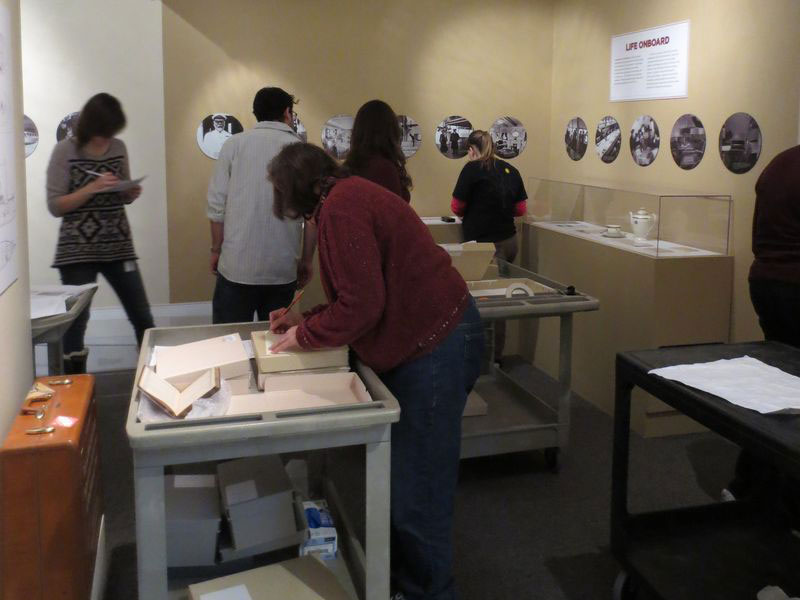
It takes several staff members to complete the rotation.
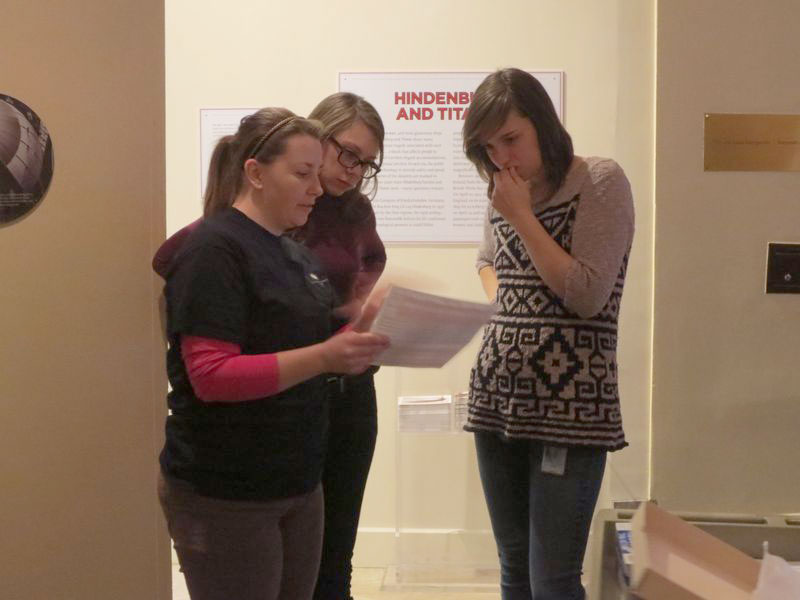
Preservation staff preparing for rotation.
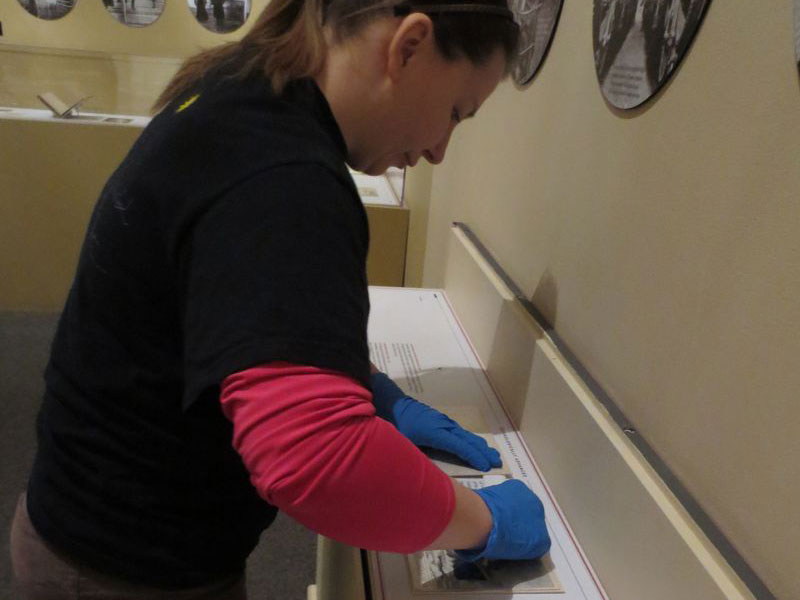
Removing object from exhibition.
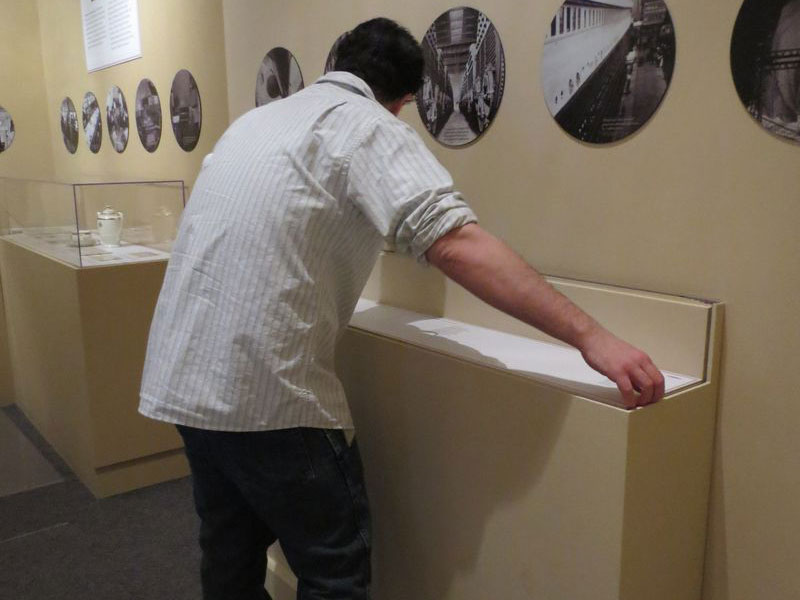
Replacing display panels.
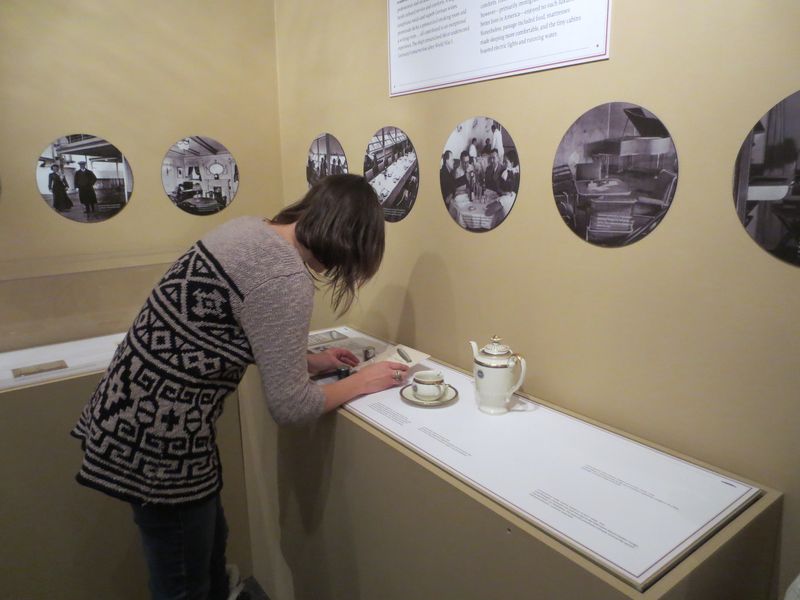
Rotating artifacts.
Several of the artifacts in our current exhibition Fire and Ice were determined by our preservation department to be fragile. They were allowed an 11 month display period. So 11 months after the exhibit was first installed these sensitive artifacts were rotated out. The artifacts in this second rotation are not the same as those in the first rotation, so the museum needed to update the descriptions on the exhibit panels to match. This is no easy feat! It takes several people to make sure the right artifacts are removed from the exhibit and that the new artifacts and panels are properly installed in the correct places.
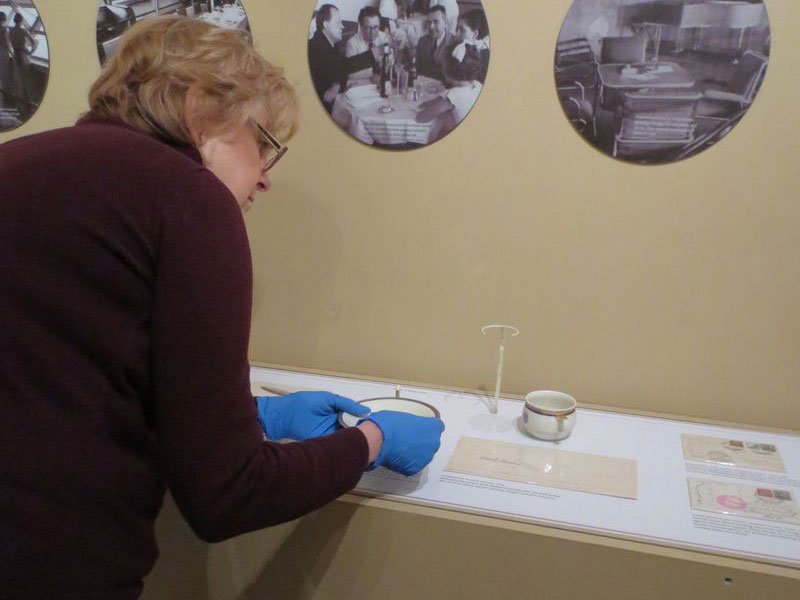
Carefully removing 3-D artifacts from panels.
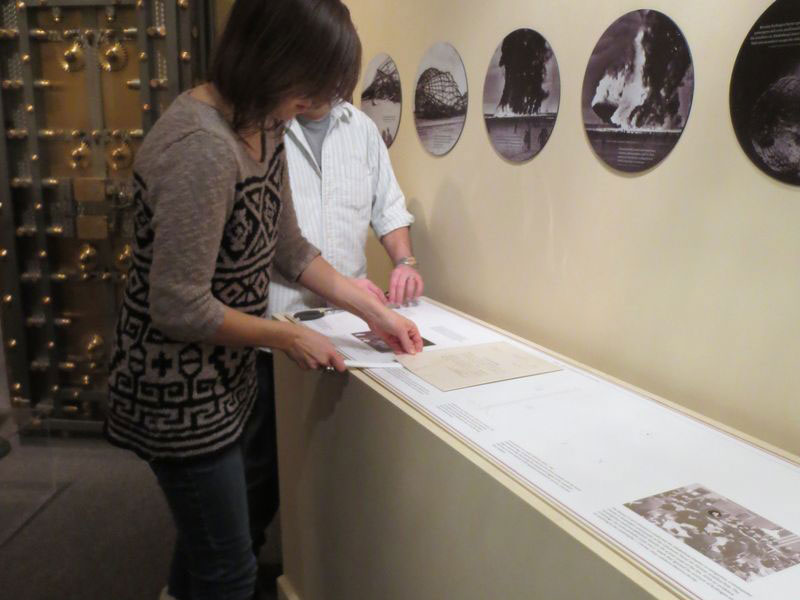
Removing paper artifact for rotation.
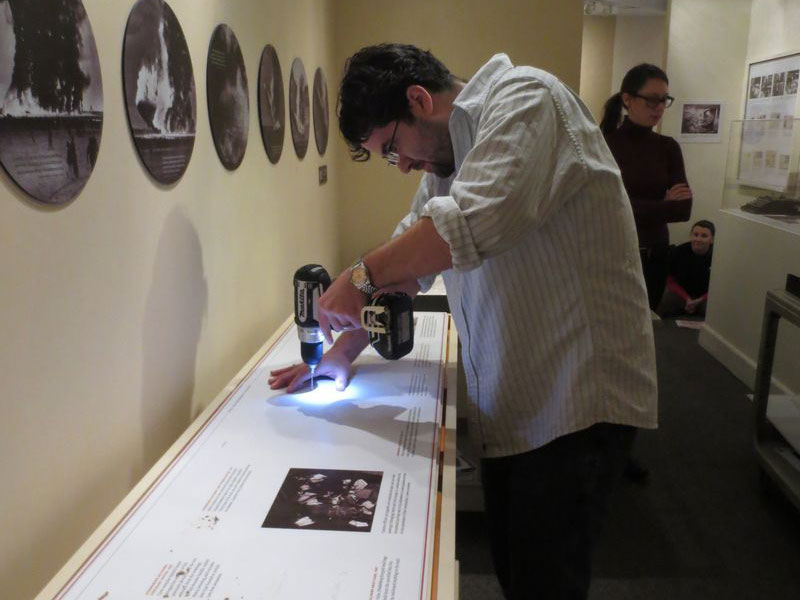
Drilling holes in new panel for rotation.
As a final step, the preservation staff measures the light levels to make sure they are not over 4 to 5 foot candles (or 40-50 lux hours). This low lighting, as well as having the lights visitor activated, helps to extend the exhibition life of an artifact. Some areas of museums may seem too dark and it may take a while for your eyes to adjust, but this small difference helps the artifacts remain in good condition for future generations.
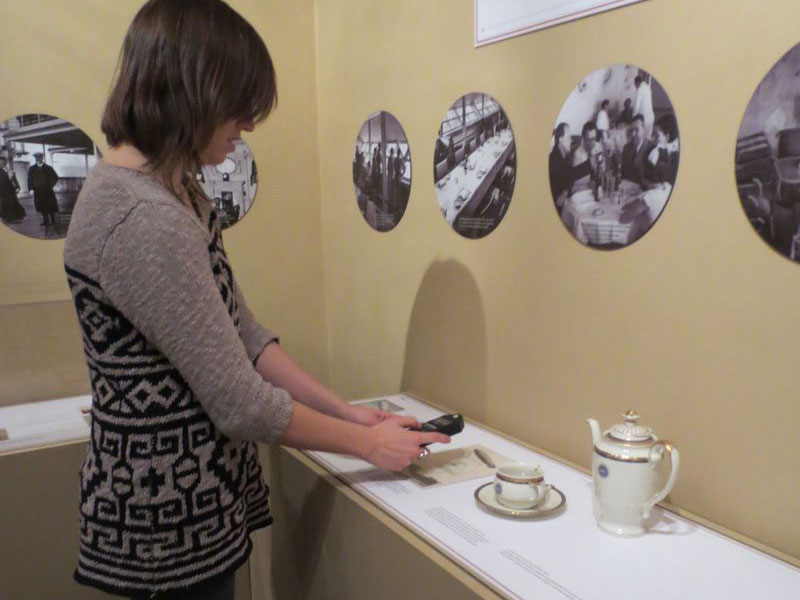
Checking light measurements.
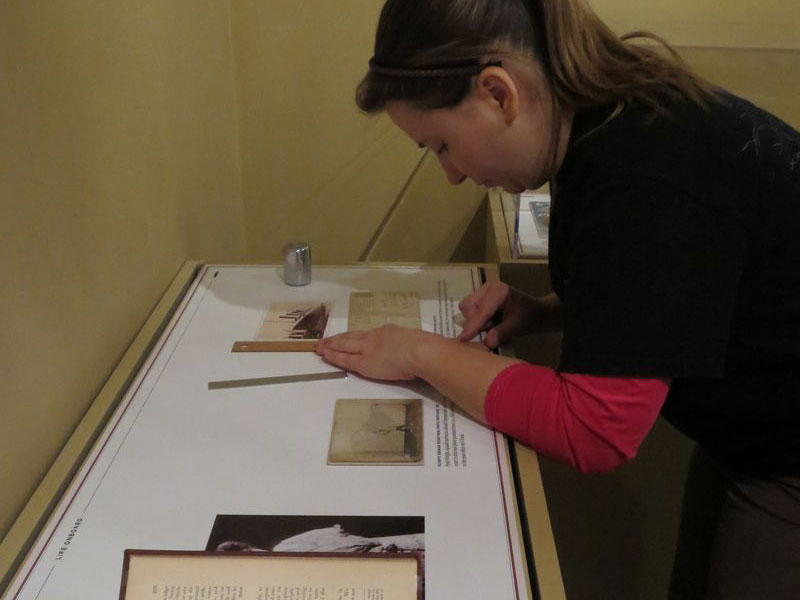
Lining up artifacts on new panels.
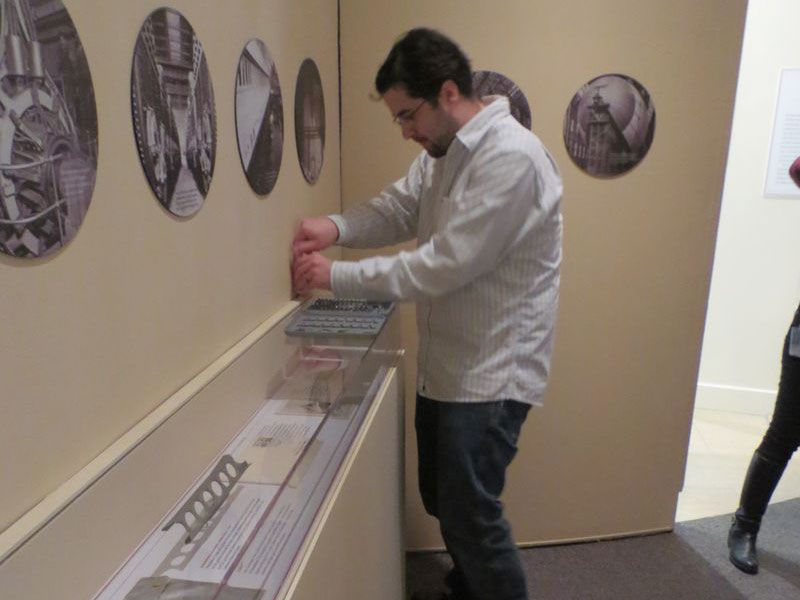
Placing covers back on exhibit panels.
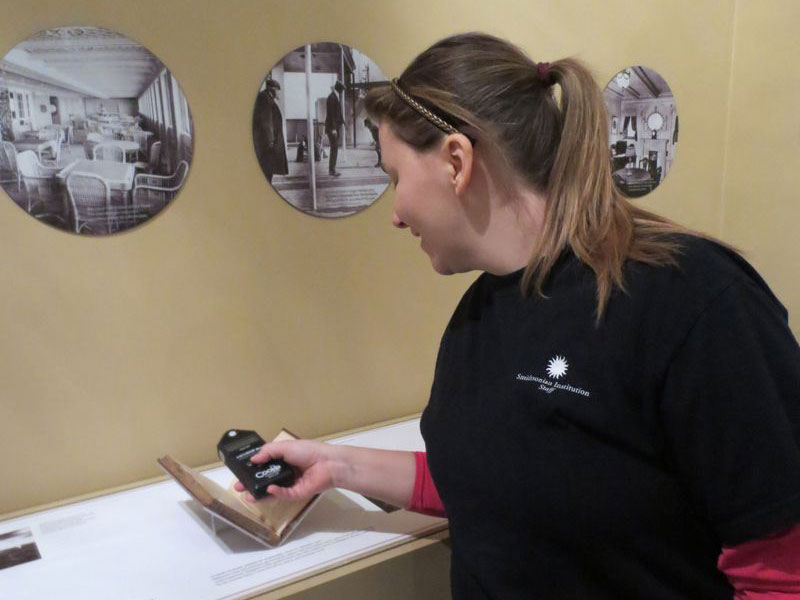
Taking light measurements.

About the Author
Rebecca Johnson: "Trying to explain to people what I do day-to-day at the museum is almost impossible since everyday is different for me. Being a “jack-of-all-trades”, I oversee the museum's offsite storage facilities, re-house the collection, monitor the environment, assist the collections department, and many other tasks. Working on so many different projects keeps me on my feet most of the day, but it allows me to interact with every department, including USPS employees, which I really enjoy. I received a M.A. in Museum Studies from George Washington University and have been fortunate to work in several other institutions, including the British Museum."
